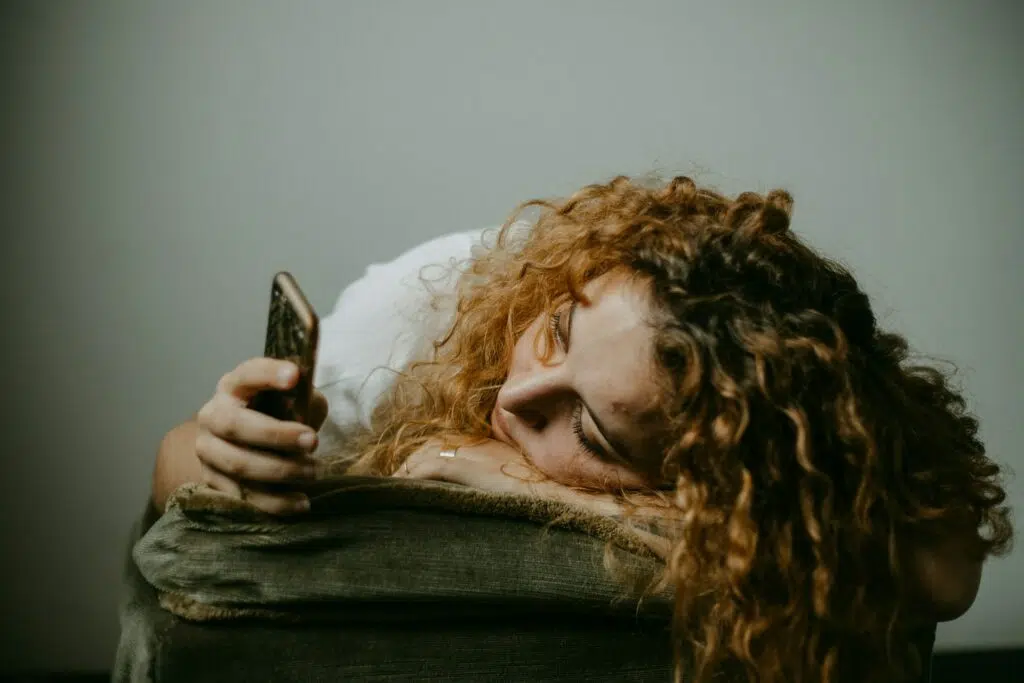Anxiety Attack and Panic Attack Differences

It’s easy to mix up anxiety and panic attacks. While anxiety attacks and panic attacks do have overlapping symptoms, they are different. Let’s get into the difference between anxiety and panic attacks so you can be in a better position to get the help you need.
What is an Anxiety Attack?
It’s easy to confuse anxiety attacks and panic attacks, as they have overlapping symptoms and both involve intense feelings of fear, but they are different.
An anxiety attack technically isn’t an official medical diagnosis, so there isn’t a set of criteria listing specific symptoms. Healthcare professionals use the Diagnostic and Statistical Manual of Mental Disorders, 5th edition, text revision (DSM-5-TR) to diagnose mental health conditions, including anxiety disorders.
Anxiety disorders include:
- Generalized anxiety disorder (GAD)
- Social anxiety disorder
- Specific phobias
- Panic disorder
Related: Learn more about understanding anxiety disorders, causes, and coping strategies.
Typically, anxiety gradually builds over time. An anxiety attack often refers to an episode of heightened anxiety.
Symptoms of anxiety include:
- Irritability
- Restlessness
- Excessive worry and fear
- Muscle tension and headaches
- Increased heart rate
- Sweating
- Fatigue
- Sleep disturbances
What is a Panic Attack?
An estimated 11% of adults in the US experience a panic attack every year, but only about 2-3% of people have panic disorder.
It’s difficult to put into words how a panic attack can feel. Your heart is pounding and feels like it will escape out of your chest, and you can’t catch a breath. The reality is that you may not be in any danger, but your body and mind are in a state of extreme and intense fear without any warning at all.
The sudden onset and extreme intensity of a panic attack can feel utterly overwhelming to deal with. Many people often mistake a panic attack for a medical emergency like a heart attack. That shows just how intense and awful it can feel in the moment. While the severity of a panic attack can vary from one person to another, generally, they progress in a similar way.
Your body’s flight or fight response is responsible for the very intense symptoms of a panic attack. This is your body’s reaction to danger that prepares you to fight for your life or run to safety. With a panic attack, your body goes into alert but for seemingly no reason.
A panic attack is in the Diagnostic and Statistical Manual of Mental Disorders with specific symptoms and criteria. Panic attacks are usually a hallmark symptom of panic disorder, but you can also experience isolated panic attacks without panic disorder. For example, an individual might have one panic attack and never experience another one again. Another individual might be diagnosed with panic disorder and experience recurrent panic attacks.
Although it can feel like a panic attack lasts a lifetime, they typically peak at around 10 minutes. The average length of a panic attack ranges from a few minutes to 30 minutes. That’s not to say that a panic attack can’t last longer.
Key Differences Between Anxiety and Panic Attacks
If you’re not sure if you’re experiencing an anxiety or panic attack, that’s completely normal, especially if it’s the first time. The main differences between anxiety and panic attacks are triggers, duration of symptoms, and intensity.
Triggers
Anxiety is often related to something specific or an ongoing situation. The point is that anxiety is usually triggered by a perceived threat. Panic attacks typically appear out of the blue without an obvious cause.
Duration
Anxiety attacks tend to be persistent and last for longer periods of time. Panic attacks are usually shorter episodes but very intense.
Intensity
Overall, panic attacks involve very intense symptoms, and anxiety symptoms can range in intensity. Generally, the physical symptoms of panic attacks are more intense than those of anxiety.
Onset
Panic attacks typically occur suddenly, and anxiety tends to build gradually over time.
Symptoms and Triggers of Anxiety vs. Panic Attacks
Experts don’t know precisely why some people experience panic attacks or panic disorder. What we do know is that the brain and nervous system have a significant role in how you perceive and react to threat or danger.
Your chances of developing panic disorder increase if there’s a family history, certain mental health conditions, and adverse childhood experiences. Often, there’s no specific trigger of a panic attack.
Panic attack symptoms include:
- Pounding heart
- Sweating
- Trembling or shaking
- Shortness of breath or a feeling like you’re being smothered
- Chest pain or discomfort
- Nausea
- Dizziness, lightheadedness, or faintness
- Chills or hot flashes
- Numbness or tingling sensations
- Feeling detached from your body and surroundings
- Fear of losing control
- Fear of dying
- A sense of impending doom
Symptoms and triggers of anxiety and panic attacks are two areas that help you tell the two apart. Anxiety symptoms can range from mild to severe, such as excessive worry or fear, muscle tension, and difficulty concentrating.
There are lots of situations that can trigger or contribute to anxiety, including:
- Health issues
- Medication
- Financial worries
- Major life changes like a new job, moving to another city, or becoming a parent
- Substance use
- Negative thinking
- Past trauma
It’s important to be kind to yourself, recognize your triggers, and try to integrate coping strategies into your life that work for you.
How to Manage and Seek Help for Both Conditions
Managing and treating anxiety and panic attacks typically involves a combination of therapy, medication, and lifestyle changes. Your individual situation will influence the specific technique or treatment.
With anxiety, for example, it’s important to address underlying causes and develop coping strategies, as it can be difficult to break the anxiety cycle. While it can feel like avoiding an anxiety-inducing task or situation is the right answer, this can reinforce the negative cycle and make it hard to break free.
“Procrastination leads to a slow building of anxiety, and the less time there is to complete a task, the more stress is held when there is no other choice but to complete it. This can result in a lack of sleep, poor communication, poor decision-making, and a decrease in focus,” says Dr. De Gannes.
Dr. Tirrell De Gannes, Psy.D., a highly regarded licensed clinical psychologist based in New York City, shares his tips for feeling less anxious:
- Rehearse deep breathing techniques
- Plan for what you can control, not what you cannot
- Consider sharing your concerns with others, no matter how small
The Importance of Professional Diagnosis and Treatment
Now you know the differences between anxiety and panic attacks. But the truth is that you don’t need to know exactly what you’re dealing with to get help. When you experience mental health issues or any symptoms that impact your quality of life, it’s important to speak with a mental health professional. A mental health professional is trained to address mental health issues, teach coping strategies, and develop a treatment plan.
A professional diagnosis puts you on the right path to the most suitable treatment for your individual case, which means that you can start to feel more like yourself faster.
Panic Attacks
- Therapeutic Approach: CBT, in particular, exposure therapy, is often used to desensitize individuals to triggers. Therapy focuses on teaching individuals how to manage symptoms during a panic attack.
- Medication: Any medication used focuses on managing episodes or preventing the frequency of panic attacks in some cases.
- Lifestyle Changes: Learn to recognize and manage early warning signs and create a safety plan for when a panic attack happens.
Anxiety
- Therapeutic Approach: Cognitive behavioral therapy (CBT) is highly effective for anxiety and often focuses on identifying underlying causes of anxiety and teaching coping strategies for long-term management.
- Medication: Antidepressants may be used for long-term management.
- Lifestyle Changes: Stress management and relaxation are key for managing anxiety long-term, as well as lifestyle changes including sleep, diet, and exercise.
What’s the First Step?
If you find that anxiety or panic attacks are affecting your well-being and becoming a problem for you in everyday life, Thriving Center of Psychology can help. Therapy creates a safe space for you to explore your triggers, understand how you feel, and learn to cope more effectively.
Take just a few minutes to fill out our questionnaire, and our client coordinator will match you with a therapist who understands your needs, challenges, and personal preferences.

The Link Between Social Media and Depression
In today’s world, scrolling through social media is as routine as brushing our teeth. We open apps out of habit — on the train, in bed, while waiting in line. Platforms like Instagram, TikTok, and Facebook keep us connected, informed, and entertained.

Signs Depression is Taking a Toll on Your Relationship
Depression can impact every part of a person’s life, from their work to their romantic relationships. Dealing with depression can take its toll on both the person with depression and the supporting partner. If you’re worried that depression is affecting your relationship, understanding its impact is an important first step.

Anxiety Attack and Panic Attack Differences
’s easy to mix up anxiety and panic attacks. While anxiety attacks and panic attacks do have overlapping symptoms, they are different. Let’s get into the differences between anxiety and panic attacks so you can be in a better position to get the help you need.

How to Overcome Procrastination and Anxiety
Procrastination is a very typical human experience. At some point or another, we’re all guilty of putting off that task we know is important. Maybe it’s household chores, filling your taxes, paying bills, or some other mind-numbingly boring task.

